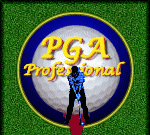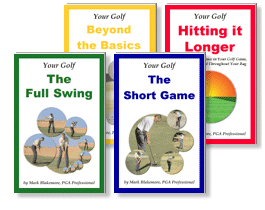Ask the Pro Archive - 2008
|
Here are all the golf questions and answers that appeared on the "Ask the Pro" page in 2008, from most recent to least recent, top to bottom. Links in the left menu column give a "keyword" indication
of the topic and will take you directly to that entry on this page. Also see the Ask the Pro Archive Index for longer descriptions in categorized and somewhat alphabetized form.
|
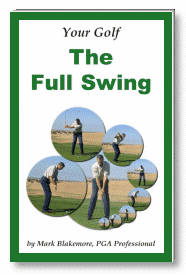 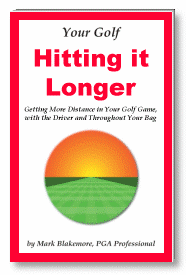
|
Question:
December 20, 2008
I have a question about the "squat" position made famous by Sam Snead. I have read about it in several books. This is where, as the first step in the downswing, the front leg is pushed out giving the golfer a symmetrical squat appearance. Is this something that is critical to work on? Is it critical to attain proper downswing mechanics?
David Montesi
Sudby, Ontario, Canada
Answer:
Hi David,
That is one way of describing it but it seems far easier, to me, to just learn the feel of weight transfer as it applies in many other sports and get your weight back onto your forward leg first rather than to try to achieve the so-called "sit-down" position (courting paralysis by analysis). The movement of the forward knee is not the thing that causes the weight transfer or downswing; that look (taken out of context in sequence photos) is just an effect of the weight transfer movement.
The weight transfer and the other movements of the swing are covered thoroughly in my books The Full Swing and Hitting it Longer: Getting More Distance in Your Golf Game, with the Driver and Throughout Your Bag.
Initiating the downswing and weight transfer are detailed enough topics that writing only goes so far and, of course, I'd have to see you in person to give you meaningful analysis and correction. If you ever visit the San Francisco bay area of Northern California you can work on your game with me in person - see Private Custom Golf Schools.
Thanks for visiting PGAProfessional.com. MB
Miscellaneous > Other > Carry only, or total distance (carry plus roll)
Question:
December 14, 2008
I want to know how far I can hit the ball with each club. So ... do I need to know the average distance my ball carries with each club only, or do I need to know the average distance the ball carries plus the average distance the ball rolls after the carry... ?
Gerald Jones
Selma, North Carolina
Answer:
Hi Gerald,
For iron shots -- which should stay near where they land most of the time, if you make good contact -- carry is what you want to know. (Also see this FAQ on "backspin.") For a driver total distance is more important, but the amount of roll will vary widely with the conditions of the course... of course.
Thanks for visiting PGAProfessional.com. MB
Rules, Etiquette and Procedures > How tall is the flagstick? (height of the pin)
Question:
November 11, 2008
How tall are golf pins and why?
John Theis
Lake Suzy, FL
Answer:
Hi John,
There is not a rule about it and it varies course-to-course, but I believe 7 feet is the recommended minimum.
Thanks for visiting PGAProfessional.com. MB
Equipment > Draw-bias(ed) driver
Question:
November 2, 2008
What is a draw driver and how is it different from a reg[ular] driver?
John Rice
Lancaster, VA
Answer:
Hi John,
A draw-bias(ed) driver probably has one or more of the following: a more closed face, more weight toward the heel, an offset face, a softer shaft. Check with the manufacturer for exact specs on each specific club. Note: I would always recommend developing good technique as the way to go, rather than buying a club that attempts to correct for technique deficiencies. For trouble with slicing see this FAQ.
Thanks for visiting and best of luck with your game. MB
Short Game > Curing "the yips"
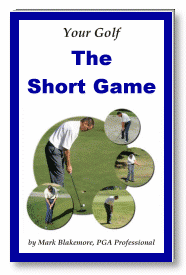
|
Question:
October 20, 2008
What is the best way to cure the yips? Thanks.
George Brusco
Osprey, FL
Answer:
Hi George,
That's a huge topic that would require far too long an answer to give you in writing. Entire books have been written on the yips. My approach would be to build up, or rebuild, excellent putting technique, fundamentally, from the beginning before doing any mental game work at all. (If you are not certain of your technique it is understandable that you would have the yips.)
I could help much more effectively in person. But if you cannot come to work with me in person get my book, The Short Game, as a place to begin.
Thanks for visiting PGAProfessional.com. MB
Miscellaneous > Professional golf-related > The ten shot rule / 10 shot rule
Question:
October 18, 2008
What is a ten shot rule in golf?
Abey Parmar
Delhi, India
Answer:
Hi Abey,
In some tournaments anyone within 10 shots of the leader makes the cut. Thanks for visiting PGAProfessional.com. MB
Rules, Etiquette and Procedures > Help with an opinion about defining "chippies" - chipping or putting
Question:
September 29, 2008
In our women's golf league we keep track of "chippies" where the ball goes in from a chip shot. We have had some ladies argue that if you use a putter it can't be counted as a chip and some who say if it's off the green it's a chip no matter what club is used. Could you shed some light on this? Thanks so much.
Karen Jenkins
New Philadelphia, OH
Answer:
Hi Karen,
I'm afraid there is no definitive answer, and that this is something that your group will have to decide democratically. The question can be argued either way. For example, there are some situations where a greenside shot would be much more difficult if played with a putter than with a more lofted club.
The opinion of one person -- no matter how experienced or eminent-- is only an opinion. But if I were making such a decision I would say that shots from off the green played with a putter are not eligible for a chippy. That is a simple solution, eliminating gray area.
For further support of this view, it is typically the case that a person's worst putt from off the green will be better than their worst chip from the same place... and, after all, you ARE calling it "chippies". Putting is not chipping, whether it is from on or off the putting surface.
Good luck with your decision. Thanks for visiting. MB
Long Game > General > Problem with practicing too quickly
Question:
September 8, 2008
I have a tendency to get too wrapped up when I am at the driving range. I tend to get really sweaty and it ends up more like a workout than anything and I don't feel like I get much from it. I know how I need to swing and that I need to take some time between each swing and think about my shot, but I still always just start hacking away at the balls like I need to hit them all the farthest when I know that is not what I have to be doing to get the most out of my practice sessions. Any tips on relaxation and keeping my point of focus on the shots is greatly appreciated!
Justin Klement
Vancouver, WA
Answer:
Hi Justin,
Yep, that's a bad habit to get into. For starters try changing clubs on every shot, as if you were playing a round of golf. Also, have some specific thing you are working on in your technique (rather than just hitting balls), then focus on the thing you're working on (especially with some practice swings before each ball). And try developing a pre-shot routine and executing it with each ball. Any or all of those things should be enough to slow you down and help you get more from your practice.
Thanks for visiting and best of luck with your game. MB
Miscellaneous > Terminology - Words and Phrases > The terms "pull" and "trap" (and "push" and "scoop"
Question:
August 27, 2008
I'm pulling a lot of my irons and heard a golf commentator call it "trapping" the ball. Are they one and the same? How can I correct this action?
Mike Patterson
Carlsbad, CA
Answer:
Hi Mike,
The terms "pull" and "trap" mean different things. A pull is a shot that goes to the left for a right-handed player (like pulling a ball to left field in baseball). To trap the ball means to contact it with a descending blow, compressing the ball between the club face and the ground. To continue with the baseball theme and perhaps enhance understanding, trapping is when the player "catches" the ball between the glove and the ground (this doesn't count as a catch). And trapping the ball in golf is also sometimes referred to as "covering" the ball.
In golf you can both pull and trap the ball at the same time. But you can also pull without trapping and trap without pulling. Trapping the ball with iron shots is usually thought of as a good thing, unless excessive. To correct a pull see this already-posted answer.
For more quick, basic and related golf terminology, the opposite of a pull would be a "push" (a shot that goes to the right for a right-handed player), and the opposite of trapping would be "scooping" (attempting to lift the ball from underneath with the club). You can look up golf terms in my golf glossary. And technique for all parts of the game is covered thoroughly in my golf instruction books.
Thanks for visiting and best of luck with your game. MB
Long Game > General > Ball goes farther with draw rather than fade
Question:
August 8, 2008
Why does the ball seem to travel farther with a draw rather than fade?
Bryan Smith
Fleet, Hampshire, U.K.
Answer:
Hi Bryan,
That is not true in every case. But where it is true (all else being equal -- which it never is) it may be because an inside out path may provide better compression of the ball, perhaps slightly higher club speeds through impact, a slightly lower trajectory and perhaps also less backspin (so maybe more roll on drives with the last two). There may be other reasons based on individual body idiosyncrasies. You can test all these things on each shot with a launch monitor. Thanks for visiting and best of luck with your game. MB
Long Game > General > Baseball swing interferring with golf swing
Question:
July 30, 2008
My son plays golf and shoots in the low to mid thirties for 9 holes. He also plays baseball but says this will mess up his golf swing. Is this true? He hits around 600 for his batting average.
Kevin Watson
Galatia, IL
Answer:
Hi Kevin,
It is not a given that baseball will mess up his golf, particularly if he understands the differences thoroughly and develops his skill in both with that understanding (sounds like he's doing pretty well in both so far). But many people do have problems when they attempt to use a baseball-type hitting action in a golf swing (that's pretty much called "hacking"). I'm sure you're aware that there are some very good baseball players who are also very good golfers. So doing both well is possible. Again, you just have to understand the technique for each thoroughly. Thanks for visiting. MB
Long Game > General > Difference between an iron swing and a wood swing
Question:
July 9, 2008
I can hit my irons accurately and consistently. But fairway woods and driver still confuse me. ...How would you define the difference in feel or swing thoughts between an iron shot and a driver or 3-wood tee shot?
Matt LaChance
Alexandria, VA
Answer:
Hi Matt,
The main difference would be the divot, or type of contact with the ground -- due to the descending angle of approach of the irons -- rather than the sweeping of the grass, or just clipping of the tee -- due to the ball position being farther forward -- with the woods. Also the woods are longer clubs and, therefore, swing on a slightly flatter plane. And they may feel a little lighter -- these days, especially. But the swings are basically the same otherwise.
To find out about making your golf swing as simple and effective as possible see my book "The Full Swing."
And to work on your technique with me in person set up a "Private Custom Golf School."
Thanks for visiting PGAProfessional.com. MB
Long Game > General > Lifting the left heel on the backswing
Question:
June 22, 2008
I have always lifted my front heel and taken in my knee when hitting the golf ball. I notice Billy Mayfair is among the few pros who still do this but all the old timers would hit this way. When did this method of striking the ball go out of favor and what are the pros/cons of using this method?
John Copeman
Montreal, Quebec, Canada

|
Answer:
Hi John,
The bottom line is whether or not you can repeat your move(s), and for that reason the less moves the better, in my opinion. I wouldn't call lifting the heel and bending the knee inward "wrong", exactly, but I would think of it as extraneous. So I would not recommend doing it unless it was already a deeply ingrained part of your feel and you were satisfied with your swing results, overall.
I doubt that that one move is a make-or-break aspect of your technique by itself, but I'd have to see your swing to comment further on that. Billy Mayfair does not seem to be having a problem with it, and there are a few others that do this, to one degree or another, and make it work.
I'm not sure when this move went out of favor (certainly decades ago). It was most likely just propagated by imitation more than anything else, but it is a fairly natural feeling when coiling the upper body and loading the weight onto the back foot -- especially for people that lack flexibility.
It has been suggested that lifting the heel diminishes the stretch between the feet and pelvic girdle in the backswing, which would decrease power, all else being equal. This is true but it may not be that critical for most players, and it can be compensated for in the downswing. Again, I guess I wouldn't say lifting the heel up and turning the knee in is wrong, if done moderately; just that it's a complication.
It has also been thought that only people with poor flexibility, or of relatively large girth, need to lift the heel to "get a big enough turn" on the backswing. Not only is the whole subject of getting a big enough turn debatable, but once you've seen, say, Paul Azinger lift the heel (he is not exactly of large girth) clearly it's not only done by rounder players.
If lifting the heel is an integral part of one's timing system or feel, then it may be that the benefit derived from that move outweighs the downside of its complexity. Again, the bottom line is can you make it work.
Ideally your swing would be as uncomplicated as possible and therefore more easily repeated. To find out about all the least complicated moves for the golf swing see my book "The Full Swing."
And to work on your technique with me in person set up a "Private Custom Golf School."
Thanks for visiting PGAProfessional.com. MB
Equipment > Clubs seem too long for shorter player
Question:
June 12, 2008
I am only 5' 5" and when swinging my woods they seem un-naturally long. I understand the longer the farther but they don't seem to swing on the proper plane as with taller players. Are there options?
Richard Luszcak
Bellevue, Nebraska
Answer:
Hi Richard,
Yes, get fitted in person by a reputable professional with club fitting expertise. Choking up, getting shorter clubs, adjusting lie angles are all possible. But technique will still be the most important thing. Thanks for visiting and best of luck with your game. MB
Equipment > The difference between a senior driver and a ladies driver
Question:
May 30, 2008
[What is the] difference [between a] senior driver and a ladies driver?
Bill Murray
Lakeland, Tennessee
Answer:
Hi Bill,
The Ladies driver is probably shorter, it probably has a smaller grip, it is probably lighter and it probably has a softer shaft. But you would have to have both of the specific clubs in question tested and compared by a professional with club fitting experience to know for sure. There is wide variety between clubs and manufacturers. Thanks for visiting and best of luck with your game. MB
Long Game > General > Opening the left hand at the top of the backswing
Question:
May 7, 2008
When I take the club back and my wrist cock I have a problem letting go of the club with my left hand and the club falls down on my neck. I don't want to grip the club too tight, then I lose feel. Help??
Bernie Neal
Hinton, WV
Answer:
Hi Bernie,
Maintain flesh-to-grip contact with the heel of your left hand (no rubbing either) using the fingers of the left hand without squeezing tightly. This one aspect of the swing takes practice all by itself. Thanks for visiting and best of luck with your game. MB
Long Game > General > The purpose of the backswing in golf

|

|
Question:
April 29, 2008
What is the purpose of a back swing in golf?
Omar Nour
New York, NY
Answer:
Hi Omar,
The main purpose of the backswing is to stretch the muscles that are going to accelerate the club in the downswing. There are other important things that may be associated with the backswing -- like initiating the rhythm of the swing, establishing the swing's plane and path, getting the body and club in good positions, etc. But the backswing's purpose is the stretching of the muscles used in the downswing -- much like the purpose of drawing an arrow back against a bow's string is to create potential energy with which to accelerate the arrow.
The details of the backswing, and the rest of the swing, are covered thoroughly in my book "The Full Swing."
And to learn to hit the ball farther, come to work with me in person in a Private Long Drive School or get the book "Hitting it Longer: Getting More Distance in Your Golf Game, with the Driver and Throughout Your Bag."
Thanks for visiting PGAProfessional.com. MB
Equipment > The purpose of grooves on the club face
Question:
April 21, 2008
What is the meaning of grooves on the club face and why [is it that] it varies from club to club ... for 3 woods it's different than 5 woods ...
Pritam H
Dubai, United Arab Emirates
Answer:
Hi Pritam,
Grooves are mainly for channeling moisture off the club face (like the treads on a tire). With clean contact in dry conditions you don't even need grooves. But since grass usually has moisture in it, grooves come in handy. Irons usually have more grooves than woods/metals and I'm assuming (but could be mistaken) that that has something to do with the fact that iron faces are flat and wood faces generally have some kind of bulge and roll (the face is not flat). But different manufacturers experiment with different groove configurations, and they each probably have their own research information and marketing "rap" on their different styles. Thanks for visiting and best of luck with your game. MB
Miscellaneous > Terminology - Words and Phrases > The phrase "moment of inertia"
Question:
March 30, 2008
What does moment of inertia mean?
Matt Gibson
Cape Coral, FL
Answer:
Hi Matt,
Moment of inertia (MOI) is a physics phrase, not a golf-specific phrase. It has been adopted in reference to golf clubs (I suspect) for marketing reasons: "high-tech" golf clubs go hand-in-hand with sophisticated-sounding terminology, eh? When used in the golf-specific sense, particularly in the last few years, MOI usually means the resistance of a clubhead to twising on off center hits, mainly due to weighting in the head: high MOI = less twisting, low MOI = more twisting. But for practical purposes moment of inertia could also mean the same thing as swing weight. It's a measure of how heavy a club swings, or its resistance to a change in angular momentum. For a simple example, if you take your driver and have it lengthened by an inch (everything else staying the same) it now has a heavier swing weight, more resistance to a change in angular momentum and a higher moment of inertia than it did before the lengthening.
If you're interested in a complete explanation of moment of inertia, angular momentum and the other forces involved in rotational movement there are plenty of them on the web. Thanks for visiting and best of luck with your game. MB
Rules, Etiquette and Procedures > What determines whether the flagstick is removed or left in the hole
Question:
March 12, 2008
When a golf player is approaching a golf hole, what determines if the flag pole stays in the hole or is taken out of the hole?
Sheridan Mowrer
Dublin, CA
Answer:
Hi Sheridan,
To remove the flagstick or leave it in the hole is always at the discretion of the player when the ball is not on the putting green. But once the stroke will be played from on the putting green the flagstick must not be touched by the ball, so it can either be removed prior to the stroke or attended and removed after the stroke is played but before the ball reaches the cup.
The most common reason for having the flagstick attended rather than removed prior to a putt is to more easily see the location of the hole -- mainly on longer putts. In terms of leaving the flag in or removing it when hitting shots from off the green, I have heard aphorisms like "take the flagstick out when you're trying to make the shot and leave it in when you're just trying to get the ball close." That may be a valid general rule, but it's more of a personal preference and feel thing, to me.
Also see the rules FAQ. Thanks for visiting and best of luck with your game. MB
Long Game > General > How grip position (strong, weak, neutral) effects the club face

|
Question:
February 29, 2008
How [does] the grip affect clubface position?
Sean Cahalane
Brewster, MA
Answer:
Hi Sean,
It's a pretty involved topic, with lots of variables. But generally, assuming that all else is in good working order, a weak grip would tend to promote an open club face at impact, a strong grip would tend to promote a closed club face at impact and a square or neutral grip would tend to promote a relatively square club face at impact. Things get more complicated when one hand is a certain way (e.g., weak) and the other hand is different (e.g., strong), and then far more complicated when you start involving the other variables in the swing.
Of course, there have been players in the past, and there are some players even now, playing just fine with what one might call a weak or a strong grip position with one hand or both. There is a "least complicated" way of doing it and then many "other" ways, all of which may be made to work depending on the individual and the amount of time spent developing the swing. For the details of the grip and the entire swing see my book "The Full Swing."
Thanks for visiting PGAProfessional.com. MB
Equipment > Getting smaller grips
Question:
February 22, 2008
I have ... irons with a .580 shaft and a [men's] stanard grip, how can I get a little smaller grip put on them and ... can that be done with any club with any size shaft?
Dwayne Stiffey
Stoystown, PA
Answer:
Hi Dwayne,
You can get a ladies or junior grip, or grips can sometimes be stretched when installed to decrease the size. Recently, some manufacturers are making more (larger and smaller) custom-sized grips. Check with a local club repair person. Thanks for visiting and best of luck with your game. MB
Miscellaneous > Golf course-related > Why the colors of flags on the greens vary
Question:
January 28, 2008
What is the significance of the colors of flags on flagsticks?
Jerry Hert
Bremerton, WA
Answer:
Hi Jerry,
It certainly is not always the case, but it is fairly common practice to mark the depth of the pin into the green in some way that is visible from the tee or while approaching the green. For flags a very common color scheme is red = front third of the green, white = middle third and blue = back third (as also commonly red tees are front, white tees are middle and blue tees are back, when there are three sets of tees). Again, it is not a rule and every course will have its own "style" but this color scheme is common.
It is also pretty common for a course to use a smaller flag or the little plastic balls that can be adjusted up or down the flagstick to indicate the flag's position on the green. In this case, if the pin is in the front third of the green the indicator (little flag or ball) would be down toward the bottom of the flagstick, if it's in the middle third the indicator would be at about the half way point of the flagstick, and if it's in the back third of the green the indicator would be up near the top of the flagstick just under the main flag.
See also Pin depth, flagstick depth -- front, middle or back of the green. Thanks for visiting and best of luck with your game. MB
Rules, Etiquette and Procedures > To replace or not to replace divots on the teeing ground
Question:
January 20, 2008
I have been told I cannot replace a divot from the tee-off area. Why is this? I made a divot and was told not to replace it.
Wendy McKiernan
Scunthorpe, N. Links, UK
Answer:
Hi Wendy,
Grasses vary, but if the divot is thick and easily replaceable it's probably okay to replace. It's also common practice to just fill-in the areas with sand or sand-seed mixture to keep things smooth and level -- replacing divots can make things bumpy. Check with the golf shop or maintenance crew at the course you're playing to see how they prefer it done.
Thanks for visiting and best of luck with your game. MB
